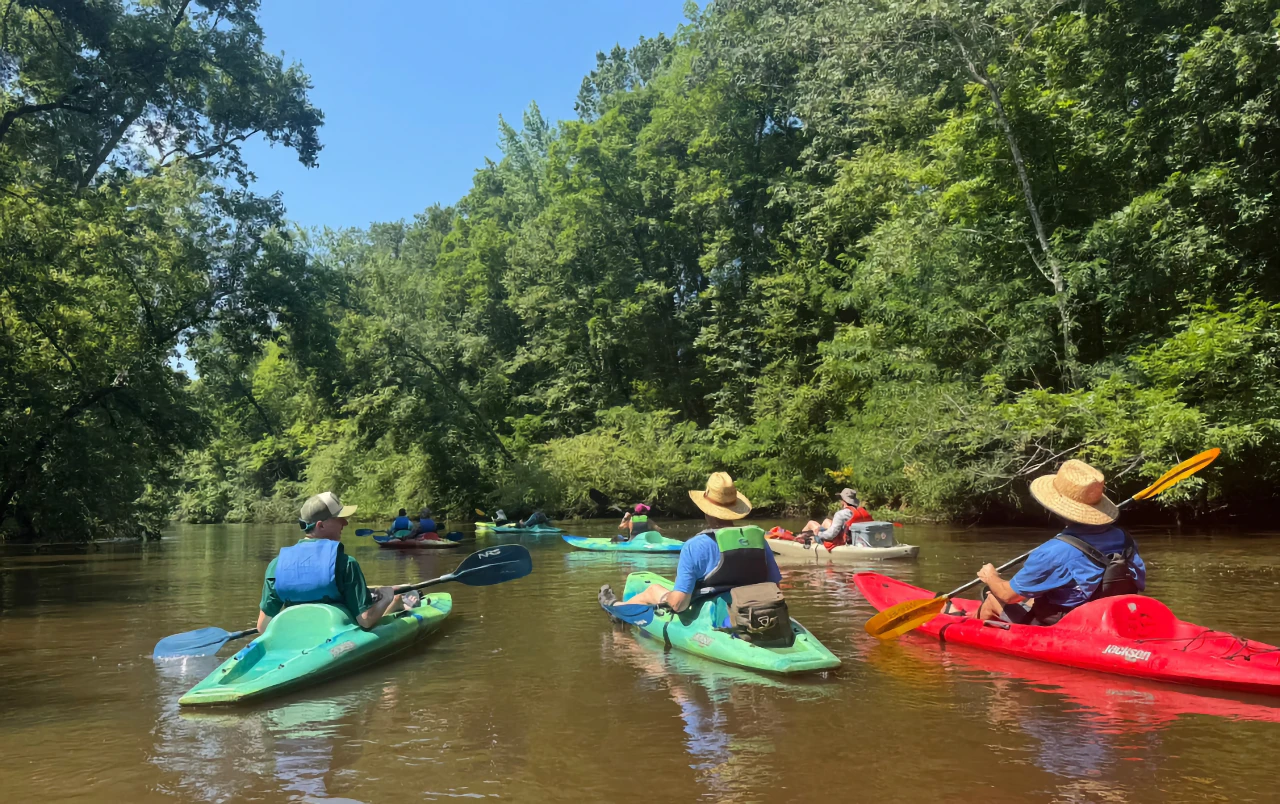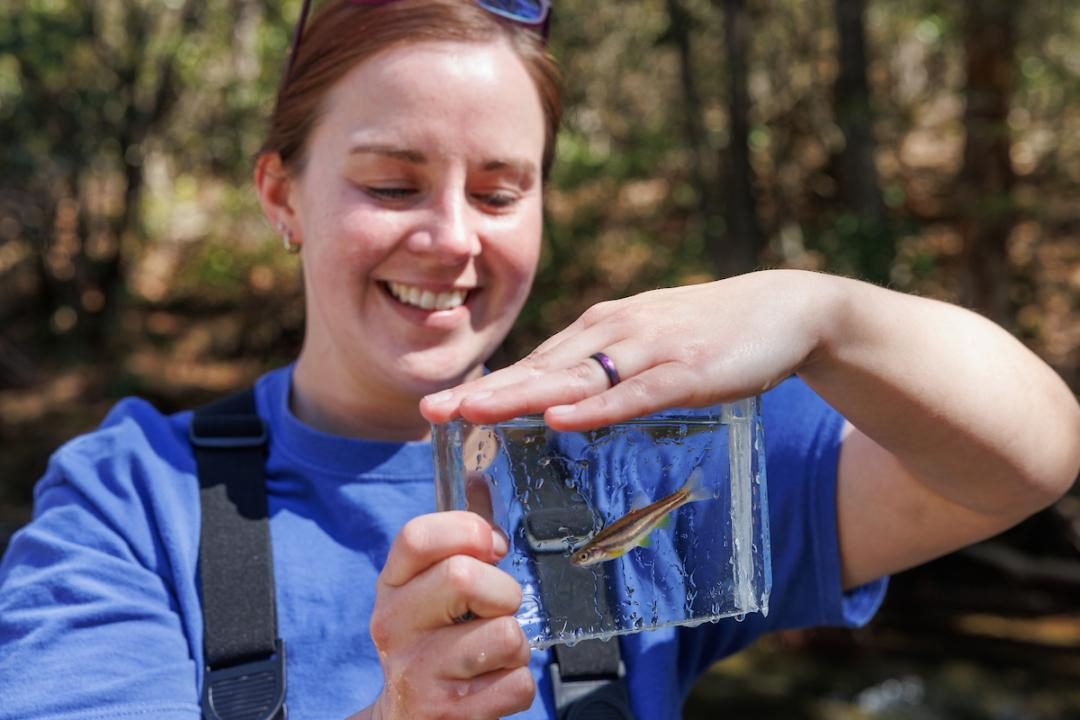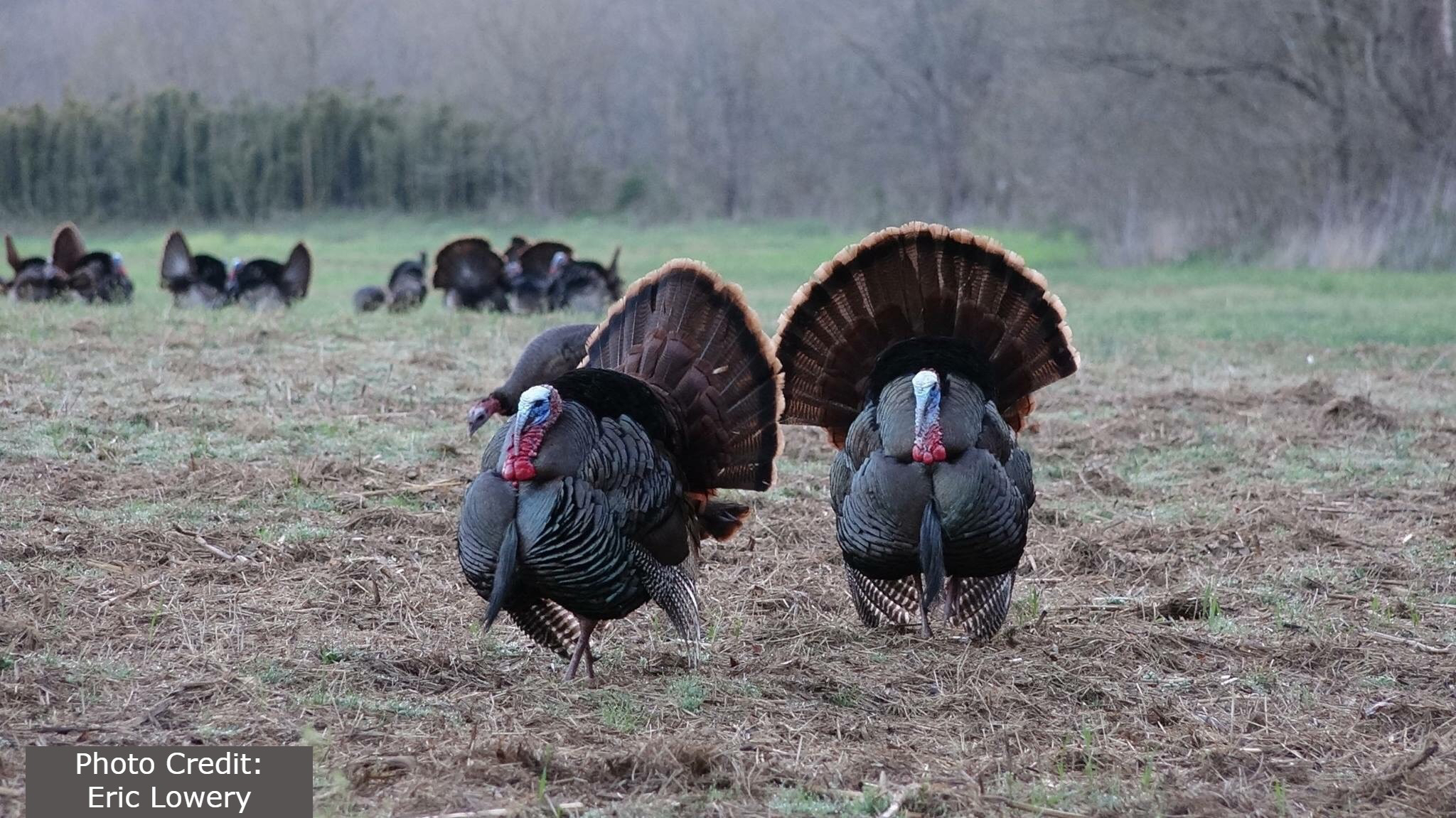Displaying items by tag: tennesse wildlife resources agency
Conservation allies save Hatchie River watershed from auction block
 The Hatchie River in McCrairy County, Tennessee is known for both its ecological value and its recreational value. TennGreen Land Conservancy
The Hatchie River in McCrairy County, Tennessee is known for both its ecological value and its recreational value. TennGreen Land Conservancy
TennGreen secures protection for last unchanneled tributary of Mississippi River
Jon. D. Bumpus is TennGreen Land Conservancy communications director.
SELMER — TennGreen Land Conservancy, The Nature Conservancy in Tennessee, and The Conservation Fund joined forces to protect 1,273 acres of ecologically rich bottomland hardwood forest and wetlands along the Hatchie and Tuscumbia rivers in McNairy and Hardeman counties. The conservation of this land is a milestone achievement in one of Tennessee’s most treasured and threatened river systems.
Late in the fall of 2024, the Hatchie River Conservancy alerted TennGreen that the property was headed to auction in just two weeks. Time was of the essence. The tract, slated for sale in six parcels, each in separate auctions, was at risk of becoming permanently fragmented. TennGreen and partners negotiated a delay, secured an appraisal, made a direct offer, and successfully canceled the auction.
In 2025, the property was officially acquired, funded in part by the Heritage Conservation Trust Fund, and is now under the jurisdiction of the Tennessee Wildlife Resources Agency (TWRA). This landscape will become a publicly accessible Wildlife Management Area, providing not only critical habitat but also new opportunities for outdoor recreation in West Tennessee.
Flowing freely through the hills and bottomlands of six Tennessee counties, the Hatchie River is the last unchanneled, free-flowing tributary of the lower Mississippi River. Its 238 miles wind through dense forests, canebrakes and swamps, supporting astonishing biodiversity.
- hatchie river
- west tennessee land preservation
- tennesse wildlife resources agency
- tenngreen
- tenngreen land conservancy
- eastern slender glass lizard
- buford pusser
- tuscumbia river
- johnd d bumpus
- threatened river system
- the conservation fund
- hatchie river conservancy
- bottomland hardwood
- heritage conservation trust fund
- wildlife management area
- critical habitat
- outdoor recreation
- biodiversity
- class i natural river area
- scenic river classification
- floodplain ecosystem
- ophisaurus attenuatus longicaudus
- endangered species
- big hill pond state park
- tennessee state wildlife action plan
- southeast conservation blueprint
- memphis sand aquifer
TWRA rescues and releases three orphaned black bear cubs
Wildlife officers rescue bear cubs after mother killed by vehicle
Matthew Cameron is a public information officer with the Tennessee Wildlife Resources Agency.
BLOUNTVILLE — The Tennessee Wildlife Resources Agency (TWRA) responded May 18 to a report of a sow black bear struck and killed by a vehicle along U.S. Highway 19E in Sullivan County. The response led to the successful rescue and release of three orphaned bear cubs into a remote area of the Cumberland Mountains.
‘A day of hope:’ Months after rescue from drought, endangered laurel dace return to the wild
 Tennessee Aquarium Reintroduction Biologist II Teresa Israel examines a critically endangered laurel dace before its reintroduction to the wild in March 2025. In July 2024, about 300 of these fish — considered by scientists to be among the most imperiled in North America — were rescued out of rapidly drying streams on Walden Ridge north of Chattanooga. Tennessee Aquarium
Tennessee Aquarium Reintroduction Biologist II Teresa Israel examines a critically endangered laurel dace before its reintroduction to the wild in March 2025. In July 2024, about 300 of these fish — considered by scientists to be among the most imperiled in North America — were rescued out of rapidly drying streams on Walden Ridge north of Chattanooga. Tennessee Aquarium
Improving drought conditions on Cumberland Plateau enabled return of fish after 2024 rescue
Casey Phillips is a communications specialist at the Tennessee Aquarium in Chattanooga.
CHATTANOOGA — After being saved from near-certain extinction last summer and overwintering in the expert care of biologists at the Tennessee Aquarium, more than 230 critically endangered laurel dace are finally back where they belong.
Last July, a prolonged regional drought caused many Southeast Tennessee streams to dwindle and, in some cases, dry up entirely. Atop Walden Ridge north of Chattanooga, water flow ceased at Bumbee Creek and Youngs Creek, the last sites known to support populations of Chrosomus saylori, the laurel dace.
When conditions in these rapidly disappearing waterways reached a tipping point, the Aquarium led a series of emergency rescue operations to save as many of these red-bellied, highlighter-yellow-finned minnows as possible. In coordination with the Tennessee Wildlife Resources Agency and with assistance from the U.S. Fish and Wildlife Service and the University of Georgia, about 300 laurel dace — the majority left on the planet — were relocated into the safety of human care at the Tennessee Aquarium in Chattanooga and Wolf Creek National Fish Hatchery in Jamestown, Kentucky.
According to the most recent report from the USDA’s U.S. Drought Monitor, much of Southeast Tennessee is still experiencing moderate drought conditions. However, a slightly wetter-than-average February made it safe to return these rescued minnows to the wild.
- tennessee aquarium
- laurel dace
- endangered fish
- endangered fish in tennessee
- cumberland plateau drought
- saving fish from drought
- jason miller
- anna george
- biologist ii teresa israel
- spring city, tn
- laurel dace day spring city
- chrosomus saylori
- tennesse wildlife resources agency
- twra
- us fish and wildlife service
Helene: Governor faces pushback after using Tenncare money for disaster relief
 In East Tennessee on Tuesday, Gov. Bill Lee viewed a buckled road damaged by the aftermath of Hurricane Helene. Brandon Hull/Office of the Governor via Tennessee Lookout
In East Tennessee on Tuesday, Gov. Bill Lee viewed a buckled road damaged by the aftermath of Hurricane Helene. Brandon Hull/Office of the Governor via Tennessee Lookout
National health care groups warned in 2022 that the unusual Tenncare fund now being used for disaster relief would redirect dollars away from low-income enrollees
Anita Wadhwani is a senior reporter for Tennessee Lookout.
NASHVILLE — In the days after Hurricane Helene unleashed catastrophic floods across parts of East Tennessee — killing 17 and inflicting hundreds of millions of dollars in damage — Gov. Bill Lee convened a series of conference calls with his cabinet members to urge his team to “think outside the box” in how to get desperately needed capital to hard-hit rural counties.
TennCare Director Stephen Smith offered up a novel idea: tap into a special savings pool within Tennessee’s Medicaid program, which draws on a combination of state and federal funds to pay the health care bills for 1.5 million Tennesseans living in or near poverty — among them pregnant women, children, seniors and those with disabilities.
Lee, who later recounted the conversation at a news conference, went with it.
The Helene Emergency Assistance Loans (HEAL) program will direct $100 million in no-interest loans from TennCare to 13 disaster-struck Tennessee counties, tapping so-called “shared savings” funds that are unique to the state’s Medicaid program.
Kayak fisherman drowns on Watauga River

TWRA bans booze in management areas to combat trail-riding crashes

NASHVILLE — Alcohol possession and consumption will be prohibited on Tennessee Wildlife Resources Agency (TWRA) Wildlife Management Areas statewide, effective April 15 with the exception of designated areas. Alcohol is only permitted at designated TWRA campgrounds and on public waters bordering or within a WMA. Drunken-disorderly conduct is also prohibited.
This rule applies to all user groups, including hunters, hikers, off-highway (OHV) drivers and passengers, and other WMA users. Signs will be posted on the WMA noting that alcohol is prohibited. TWRA wildlife officers will be issuing citations for alcohol possession and use that is not in compliance with the regulations. Tennessee State Driving Under the Influence laws also apply on local roads and managed trails when operating OHVs.
The rule change is being implemented due to high rates of intoxicated trail riding on WMAs and frequent accidents where alcohol was a contributing factor. The TWRA is committed to public safety and is focused on keeping public lands family friendly and safe for all Tennesseans.
— TWRA
TWRA fisheries and crayfish expert retires after four decades of service
 Carl Williams, a TWRA fisheries technician and self-taught crayfish biologist. TWRA
Carl Williams, a TWRA fisheries technician and self-taught crayfish biologist. TWRA
MORRISTOWN — Carl Williams, a Tennessee Wildlife Resources Agency fisheries technician and self-taught crayfish biologist retired after dedicating more than four decades to wildlife and fisheries conservation and management.
Williams began working with TWRA in August 1979 through the Young Adult Conservation Corp (YACC), which was a federally funded program. Initially hired for a one-year assignment, he worked with lands management wildlife biologists on various projects, including white-tailed deer and wild turkey restoration.
The subsequent year marked a shift as he joined TWRA’s Fisheries Division, conducting creel surveys on Cherokee and Douglas reservoirs. In August 1981, he transitioned to the Buffalo Springs Trout Hatchery spending the next seven years propagating and rearing rainbow, brown, brook, lake and Ohrid trout, and distributing them throughout many streams, rivers and reservoirs in East Tennessee.
Rangers pry bear cub from pet food container
 TWRA is stressing the importance of being BearWise after removing a plastic pet feeder from a bear cub’s head this week in Blount County. Tennessee Wildlife Resources Agency
TWRA is stressing the importance of being BearWise after removing a plastic pet feeder from a bear cub’s head this week in Blount County. Tennessee Wildlife Resources Agency
Wildlife agency advises people to be bear aware
Matthew Cameron is a wildlife information specialist at Tennessee Wildlife Resources Agency.
MARYVILLE — Tennessee Wildlife Resources Agency is stressing the importance of being BearWise after recently removing a plastic pet feeder from a bear cub’s head. TWRA Black Bear Support Biologist Janelle Musser responded and promptly began a trapping effort. She was able to lure the cub into a trap, but was unable to trigger it with its mouth due to the container on its head. She moved the trap each time a new sighting was reported, even trying different style traps but the mother became trap shy and difficult to pattern.
Sturgeonfest 2023

- sturgeonfest
- seven island state bird park boat ramp
- french broad river
- dylan owensby
- southeast lake sturgeon working group
- warm springs national fish hatchery
- sturgeon reintroduction
- sturgeon recovery
- sturgeon release
- us fish and wildlife service
- lake strugeon release
- acipenser fulvescens
- tennesse wildlife resources agency
- twra
Tennessee Aquarium brings more baby sturgeon into the world
 A young lake sturgeon is viewed through a photographic aquarium after arriving at the Tennessee Aquarium Conservation Institute. Tennessee Aquarium
A young lake sturgeon is viewed through a photographic aquarium after arriving at the Tennessee Aquarium Conservation Institute. Tennessee Aquarium
Tennessee Aquarium welcomes 2,500 baby lake sturgeon as restoration effort turns 25 years old
Casey Phillips is a communications specialist at the Tennessee Aquarium in Chattanooga.
CHATTANOOGA — The approach of summer coincided with the arrival of thousands of juvenile lake sturgeon in the Tennessee Aquarium Conservation Institute.
Biologists at the Aquarium’s freshwater field station welcomed 2,500, 2-inch babies into their care. After a steady diet of bloodworms and brine shrimp, bringing the fish to at least 6 inches, they will be reintroduced into the Tennessee River.
These tiny fish hold tremendous promise. Adult lake sturgeon may reach lengths of 8 feet and live 150 years.
“They start out really small, so it’s shocking to think how big they can get,” says reintroduction biologist Sarah Kate Bailey. “The first year of life is when they grow the quickest.
“They grow so fast while we have them here. You’ll go home for the day, come in the next morning, and they look like they’ve grown overnight.”
- tennessee lake sturgeon
- sturgeon in tennessee river
- sturgeon recovery
- sturgeon reintroduction
- casey phillips writer
- lake sturgeon
- sarah kate bailey
- clean water act of 1972
- dr anna george
- chattannoga aquarium
- chattanooga environment
- Tennessee
- warm springs natural fish hatchery
- lake sturgeon working group
- tva
- tennessee valley authority
- reservoir water release
- tennesse wildlife resources agency
- tennessee aquarium conservation institute
- tennessee aquarium
TWRA wants your data on Tennessee’s wild turkeys
 American wild turkey populations have recovered from historic lows. TWRA still needs help managing the modern populations. Courtesy Eric Lowery via Tennessee Wildlife Resources Agency
American wild turkey populations have recovered from historic lows. TWRA still needs help managing the modern populations. Courtesy Eric Lowery via Tennessee Wildlife Resources Agency
TWRA wants you to help build research on USA’s second bird
NASHVILLE — Benjamin Franklin only joked (we think) about making the wild turkey the national bird, but this summer you can help Tennessee with research on the turkey’s national history and renaissance.
Turkeys and bald eagles both grace the state and Southeast and have a notably parallel history of climbing from dire straits nationwide.
The bald eagle became the national symbol on the U.S. seal in 1782.
Declaration of Independence signer Franklin said he would have preferred a different bird. While he may have been joking, he never lobbied for it publicly. His comments in a letter to his daughter, Sarah, have become infamous.
“For my own part I wish the bald eagle had not been chosen as the representative of our country. He is a bird of bad moral character. He does not get his living honestly. You may have seen him perched on some dead tree, where, too lazy to fish for himself, he watches the labour of the fishing hawk; and when that diligent bird has at length taken a fish, and is bearing it to his nest for the support of his mate and young ones, the bald eagle pursues him, and takes it from him … the turkey is in comparison a much more respectable bird, and withal a true original native of America.”
- twra
- twra turkey
- wild turkeys in tennessee
- wild turkeys rebound
- wild turkey survey
- wild turkey rebound
- wild turkey ben franklin
- ben franklin
- bald eagle
- national bird of us
- tennesse wildlife resources agency
- national bird
- wild turkey population
- bald eagle population
- bald eagle history
- wild turkey history
- stephen bales
- thomas fraser
- ben pounds
Falcons in flight: Gatlinburg couple earns top conservation honors from Tennessee Wildlife Federation
![Worsham Conservationist of the Year1]() Arrowmont supporters Margit and Earl Worsham named Conservationists of the Year by Tennessee Wildlife Federation
Arrowmont supporters Margit and Earl Worsham named Conservationists of the Year by Tennessee Wildlife Federation
This story was provided by Arrowmont School of Arts and Crafts.
GATLINBURG — Margit and Earl Worsham stood in front of family, friends, and fellow conservationists on stage in Nashville this spring and were presented with a unique award of mahogany shaped like a peregrine falcon in flight.
They were named the Tennessee Wildlife Federation’s 2022 Conservationists of the Year at the federation’s 57th Annual Conservation Awards in May.
It’s a prestigious honor presented to nominees considered to have the most significant contribution to the cause of natural resources conservation in Tennessee.
Dinosaurs released in Chattanooga to honor Earth Day 2022
 Tennessee Aquarium Director of Hospitality and Marketing Meredith Roberts and her daughter Lucy release a juvenile lake sturgeon during an Earth Day event on the Chattanooga riverfront. Tennessee Aquarium
Tennessee Aquarium Director of Hospitality and Marketing Meredith Roberts and her daughter Lucy release a juvenile lake sturgeon during an Earth Day event on the Chattanooga riverfront. Tennessee Aquarium
Tennessee Aquarium releases endangered sturgeon on a fin and a prayer
CHATTANOOGA — Lake sturgeon are living fossils.
They are dinosaur fish. They have no scales. They are protected by a tough skin with boney plates, and are unchanged for millennia. They are part of a widespread related group of fish, with 23 species worldwide, and are an endangered species in Tennessee.
Tennessee Aquarium staff released some of these dinosaurs into the Tennessee River here on Earth Day, observed this year on April 22. Aquarium staff were joined by 30 students from Calvin Donaldson Elementary School and the public to release 65 juvenile lake sturgeon into the Tennessee River at Chattanooga’s Coolidge Park.
Limbless bears break hearts but donuts may be worse than leg traps
 Courtesy of Help Asheville Bears
Courtesy of Help Asheville Bears
By any other name: From poaching to cars and traps, black bears face diverse human threats in Southern Appalachians
Activists and state agencies agree bear poaching is an age-old problem in the mountains of Tennessee and North Carolina, but they diverge when it comes to some key aspects of the crime and its prevention.
The non-profit Help Asheville Bears is raising awareness of threats to bears on both sides of the state lines and getting coverage on local media outlets like this piece on Knoxville-based WBIR. Its message has also appeared on a billboard in Sevierville. The Arden, N.C.-based group offers a tip line, rewards and also supports what could be described as a self-styled anti-poaching militia.
“Bear poaching is a big deal. It happens anywhere where there are bears,” said Jody Williams, the founder of Help Asheville Bears, which is responding to what its members see as an increasing threat to the very symbol of wild Southern Appalachia. HAB is especially concerned about trapping that Williams said has left limbless bears limping throughout the mountains.
- bear poaching
- smoky mountains bear poaching
- limbless bear
- legless bear
- save asheville bears
- twra bear
- bear trap
- trap sold on amazon
- poacher strike force
- help asheville bear
- leg trap
- leg trap amazon petition
- danger to bear
- don't feed bear
- bearwise
- tennesse wildlife resources agency
- north carolina wildlife resources commission
- black bear
Biodiversity in crosshairs as burgeoning Middle Tennessee fears water shortage
 This biologically rich stretch of the Duck River could soon be the site of a large municipal water intake facility.
This biologically rich stretch of the Duck River could soon be the site of a large municipal water intake facility.
Duck River targeted by thirsty, growing municipalities in Nashville area
This story was originally published by Tennessee Lookout
Marshall County, located outside what was once considered the boundary edge of growing suburbs circling Nashville, has seen explosive growth of its own in recent years — call it the Williamson County overflow effect, says County Mayor Mike Keny.
Drawn by more affordable housing, jobs and the rural character of the county — about an hour from Nashville in the “heart of the Southern Automotive Corridor” (as local economic development officials call it) — the influx of residents, and some relocating business and industry, has brought new urgency to a long-standing reality.
The county doesn’t have its own water supply. For decades, it has had to pay wholesale for drinking water from the cities of Murfreesboro and Lewisburg. That supply is no longer adequate.
A new proposal by county officials calls for building a water treatment facility along the banks of the Duck River in northern Marshall County capable of siphoning up to 6 million gallons of water per day; establish a reliable local water supply for decades to come.
- tennessee water supply
- murfreesboro water
- tennessee lookout
- williamson county water supply
- duck river
- biodiversity
- mussels
- most biologically diverse river in the united states
- duck river biodiversity
- most biodiverse us river
- drinking water
- water treatment facility
- water supply
- urbanization
- marshall county tn
- southern automotive corridor
- tennesse wildlife resources agency
- aquatic biodiversity
- pale liliput mussel
- rabbitsfoot mussel
- the nature conservancy
- tennessee department of environment and conservation
- tdec
- twra
Tennessee Aquarium and partners are stocking another East Tennessee mountain stream with imperiled Southern Appalachian brook trout
 Juvenile brook trout swim into the water of their new home during a joint effort to return the species to its rightful range in the Tellico River watershed in the southeastern Cherokee National Forest. Photo courtesy Tennessee Aquarium.
Juvenile brook trout swim into the water of their new home during a joint effort to return the species to its rightful range in the Tellico River watershed in the southeastern Cherokee National Forest. Photo courtesy Tennessee Aquarium.
In a virtuous cycle of life, native brookies return to Tellico River watershed in southeastern Cherokee National Forest.
(The writer produced this original piece for the Tennessee Aquarium).
Navigating through a thicket of branches while clambering across slick boulders in a rushing mountain stream is a difficult task in the best of times. Doing so while attempting to balance 40-pound buckets of water filled with imperiled fish takes the challenge to an entirely new level.
A team of scientists from the Tennessee Aquarium Conservation Institute drove to one of the lush, high-elevation streams in the southern reaches of the Cherokee National Forest. During a brief lull between rainstorms, they were joined by Tennessee Wildlife Resources Agency representatives and the U.S. Forest Service to celebrate a homecoming for 250 long-lost residents of this gorgeous landscape: juvenile Southern Appalachian brook trout.
Carefully navigating through a snarl of streamside vegetation, participants paused to release five or six trout at a time into pools with overhangs where the young fish could hide from predators and ambush floating insects that washed into the stream. The going was tough, but those involved in the effort to restock almost a kilometer of this pristine creek say the challenge was worth the reward of seeing Tennessee’s only native trout back in its ancestral waters.
“The days when we release fish, especially brook trout, are really special moments,” said Tennessee Aquarium Aquatic Conservation Biologist Dr. Bernie Kuhajda. “We’re with these fish all the way from when we first bring adults into the Conservation Institute to spawn, to watching the eggs start to develop, to the juveniles that are just a few inches long and ready to release here.
“It really is knowing that we get to help restore trout to the full circle of life. Days like today are the culmination of all that work to put trout back into the Southeastern streams where they belong.”
Like many Appalachian streams, this tributary of the North River in the Tellico River watershed hasn’t hosted the brook trout for almost a century. Clearcutting of forests in the early 1900s made waters in the region too warm. Combined with the introduction of brown and rainbow trout, “brookies” were effectively lost from more than 75 percent of the waterways where they once thrived.
- tennessee aquarium
- tellico river
- cherokee national forest
- native brook trout
- brook trout
- tennessee aquarium conservation institute
- heigh elevation stream
- headwater
- tennesse wildlife resources agency
- spawn
- brookie
- southern appalachia
- trout unlimited
- aquatic wildlife
- natural heritage
- research project
- freshwater science
- conservation
- biological diversity
- biodiversity
- watershed
